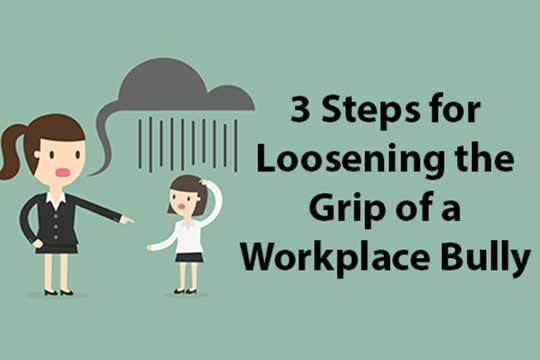Helene Lerner's Blog, page 38
April 19, 2016
How to be Intimate Without Having Sex
 Real intimacy is the ability to get close to people, but if you’re pushing them away, consciously or unconsciously, you’re never going to really connect. These tips will help you get closer and set the stage for physical intimacy as well.
Real intimacy is the ability to get close to people, but if you’re pushing them away, consciously or unconsciously, you’re never going to really connect. These tips will help you get closer and set the stage for physical intimacy as well.
Your partner wants you to be happy. There’s nothing more that warms your partner’s heart than when they know you are content. So, don’t hold back any good feelings, and laugh a lot. Also, let them know when they do something out of the ordinary that’s really thoughtful.
Everyone wants respect, and your partner is no different. Watch your judgment. Instead of looking at what they’re doing wrong, acknowledge what they’re doing right. Insight; often when we criticize someone else, it’s because we’re feeling uncomfortable with the same trait in ourselves.
Your partner wants you to understand how they really feel. When someone really opens up, they want to be heard. Are you listening for the nuggets of truth that are being said? Sometimes it can be threatening hearing the truth, but if we don’t take it in, we may find more of a distance created.
Avoiding Job Burnout Without Dousing The Flame
 Are you a high performer who dedicates yourself to making the most of every hour? If so, you likely hold your feet to the fire, draw on your energy reserves, and push yourself to ever increasing accomplishments.
Are you a high performer who dedicates yourself to making the most of every hour? If so, you likely hold your feet to the fire, draw on your energy reserves, and push yourself to ever increasing accomplishments.
What happens if you push too hard, or too long? Can you draw your energy reserves down? And does that place you at risk for burnout – before you even recognize you’re at risk? If you’d like to continue handling high-stress workloads without dousing your flame, observe these three guidelines.
Recognizing the signs
If you’re curious about whether you’re a candidate for burnout, consider this list of early burnout signs:
Do any of these fit you?
Knowing when to switch from peak to optimum
Unfortunately, many ignore and attempt to override the signals they’re heading for burnout. If you’ve pushed yourself for years and are suffering from diminishing energy, it may be time to make a change from peak to optimum performance. The difference? – Peak means pushing yourself to do all you can manage. Optimum means finding the sweet spot – where you’re achieving great results without deleting your energy reserves.
Making the switch
If you’d like to find your optimum “sweet spot”, ask yourself these questions:
What makes the above questions crucial? They define your “expectation level” stress. If the high standards you set for yourself call for you to be constantly “on”, with no letup or recharge time, you may head toward to eventual burnout.
Your turn
What do you think? Have you ignored early burnout signals? Don’t wait until it’s too late. If you consistently feel “brain dead” at 5:30 now, you may find that you’re maxed out by 2:30 p.m. in four months.
If you’re starting to question whether you’re burning out, examine your work priorities and methods -- what changes can you make to keep productivity high without pushing yourself too hard too often? Chances are you’re aware of what you need to do and yet you’ve put it off. The time is now, find your optimum sweet spot.

© 2016, Lynne Curry, executive coach and author of Solutions and Beating the Workplace Bully. Follow her @lynnecurry10 or on workplaceocoachblog.com or on bullywhisperer.com™
5 Ways to Get a Grip When Your Anxiety Gets the Upper Hand

5 Ways to Get a Grip When Your Anxiety Gets the Upper Hand
1. Exit therapy. If you are with people--try to excuse yourself. Go to a quiet place, take a few deep breaths, and use positive mind-talk. Something like, "this is not permanent,it can be resolved." If that doesn't give you some relief, call a friend who you trust and let her "talk you down".
2. Remember another incident that was challenging and resolved itself. Like that time, which has come and gone, even though it doesn't feel that way, "this too shall pass."
3. Physically, get active. Do some brisk-walking, around the block, the office, walk up a flight of stairs. Engage your body in a positive way to change the focus from your anxious thoughts.
4. Challenge your negative thoughts and find the errors in your thinking. Ask yourself, “How true is what I’m telling myself?” Look for the evidence that proves it. Then, find an alternative viewpoint. What is the most realistic outcome? Write down what you’ve learned.
5. Read something positive. Keep an affirmation close by, or a meaningful quote--something that will help you think differently about your ability to deal with what is troubling you.
How to Deal with a Manipulator
 More on how to deal with a Manipulator
More on how to deal with a Manipulator
Do you ever feeling like someone else is trying to control you? It feels subtle but you momentarily feel under their grip? Watch out, you are probably on the radar screen of a manupulator. How do you loosen their hold on you? Heed these steps:
1. Awareness is key. When you feel someone is trying to back you into a corner, even if they are saying they're not, trust your gut. You know that they are. Fess up to what's really happening.
2. Counter what they say. They may try to tell you all sorts of reasons why you need to do something, but ask yourself: do you really need to do it? Whatever they are trying to "sell" you, don't fall for the bait.
3. Catch them in the act. When they are saying one thing but doing another, let it be known. Just call them out on it. "So you are saying....., but here's what you are doing...." (fill in the blanks).
4. When in doubt, check it out. If you are confused by what is going on, call a friend, give them the scoop, and get their feedback.
5. Run for the hills. You don't want to have to deal with a person who manipulates much of the time, those people are toxic. If you can, have as little to do with them as possible.
April 18, 2016
3 Steps for Loosening the Grip of a Workplace Bully
 Workplace bullies, like the wounded rhino, the silent grenade and the angry aggressive jerk, love ensnaring others in their grips. Here’s what to know about each bully type, and how to break free from their grip.
Workplace bullies, like the wounded rhino, the silent grenade and the angry aggressive jerk, love ensnaring others in their grips. Here’s what to know about each bully type, and how to break free from their grip.
Wounded rhinos
Like their namesake, workplace wounded rhinos attack with a vengeance. This bully’s goal? – To undermine anyone who might get in their way or be competition for opportunities.
The silent grenade
The silent grenade bully keeps others intimidated by threatening an explosion. You see their tightening lips, jutting jaw or reddening face and back away or back down.
The angry, aggressive jerk
The most common of all bullies, the angry aggressive jerk, uses insults and blaming, belittling comments as weapons. This workplace bully can flatten your self-esteem and sap your energy.
Breaking free: never let a bully stake an outpost in your mind
When the wounded rhino bully charges you or the silent grenade glowers at you, you may wonder what you did to provoke these bullies. When the angry aggressive bully verbally slams you, his demeaning comments can seep into your brain like poison.
These bullies then control you at a deep level, by attacking your sense of self. Don’t make the bully’s fault yours. No one provokes nor deserves bullying.
Loosening their grip
Has your fear of a bully led you to walk on eggshells? When you see a bully glower do you start to placate? If so, you’ve let a bully set a game in motion and now you’re playing the bully’s game. Further, workplace bullies see your reaction and feed on it.
Step off the game board. In your mind or even out loud say, “Game over” or “Not playing.” Put your game face on. Train yourself not to react. When you do, you simply watch a failed bullying attempt.
Standing up
If you face a workplace bully, develop the courage to stand up for yourself and counter the bully’s attacks. Be willing to exit your comfort zone. Learn to say, and believe, “I don’t deserve that” and “Do not insult me.”
You, and everyone in the workplace, have the right to respect and dignity. Bullies require targets, and when you decide you don’t want to participate, bullies lose their power.

© 2016, Lynne Curry, executive coach and author of Solutions and Beating the Workplace Bully. Follow her @lynnecurry10 or on workplaceocoachblog.com or on bullywhisperer.com™
The Do’s and Don’ts of a Healthy Relationship
 DO: Get off your cell and give your full attention.
DO: Get off your cell and give your full attention.
Yes, you can scroll through your feed and still listen. But it’s more important that the person you’re communicating with feels heard. That’s not going to happen until you put down your device and really take in what’s being said.
DON’T: Discuss serious matters over texts or email.
Things get lost in translation. You really can’t pick up someone’s real tone by messaging. Speak to them in person and understand what’s really going on.
DO: Spend some time apart.
As they say, distance makes the heart grow fonder. It’s good to take breaks from each other. It keeps you from getting on each other’s nerves and it gives you experiences to talk about. It’s also a good way to build trust by giving someone space.
DON’T: Name call during an argument.
If you’re at a point where you feel like you don’t have control of yourself, walk away. Because words can create wounds that are hard to heal. Arguments may be inevitable, but they don’t have to be damaging.
DO: Ask for what you want.
Communication is the make or break of a relationship. Never assume someone knows what you’re thinking. It may sometimes be difficult to state what you need because you may not get it, but have the courage to do so.
DON’T: Compare your relationship to anyone else’s.
Just like no two people are the same, no relationship is the same. The two of you together are special.
- Bre Glynn
How to Make Peace with Something You Cannot Control
 Being in control feels safe, you can feel safe when you’re not in control too. The world is unpredictable and your power is limited, so feeling safe without control is a valuable skill.
Being in control feels safe, you can feel safe when you’re not in control too. The world is unpredictable and your power is limited, so feeling safe without control is a valuable skill.
When the world disappoints your expectations, your brain releases cortisol and it feels like an emergency. You can re-wire your brain to feel safe when you’re not in control. That doesn’t mean being out of control or giving up. It means building a new neural pathway to replace that old cortisol circuit.
Your brain will build a new pathway if you repeat a new thought or behavior for forty-five days. So give up control of something for the next six weeks and you will like the results!
Notice your usual strategy for feeling “on top of things,” and do the opposite.
For example, if you are a person who tries to bake the perfect soufflé, spend forty-five days cooking without recipes. Conversely, if you are a person who likes to just throw things into a pot, spend forty-five days following recipes.
If you are a person who likes everything neat, let junk pile up for six weeks. But if you are a person who hates order and loves chaos, put things away as soon as you use them for six weeks.
Color outside the lines if that’s new for you, but if you already pride yourself on that, courageously stay inside the lines. It might feel awful on Day One, but forty-four days later it will feel curiously safe.
Don’t quit your day job to beg with a rice bowl. Just stop checking the weather report, buying lottery tickets, and expecting the world to work according to your rules. You will not like the cortisol at first, but you will train your brain to know that it doesn’t kill you. You will learn to feel safe in the world despite your inability to control it.
Getting rid of the clock is a great way to experiment with control, because you can’t control time.
We all have habits for managing the harsh reality of time. For some it’s chronic lateness and for others it’s constant clock-checking. You may think you can’t change your relationship with time, but here are three great ways to ignore the clock and make friends with the passage of time:
No matter how busy you are, you can find a way to relax your efforts to control time. You may be surprised at the bad feelings that come up, despite your abiding wish to escape time pressure. The bad feelings won’t kill you, however, and accepting them helps you accept the harsh realities of time.
Your mammal brain feels good about things it can control. Some people break traffic laws to enjoy a sense of control, while others feel their power by scolding those who break traffic laws. Whatever gives you a sense of power won’t work all the time, however. You will end up feeling weak and unimportant some of the time. That triggers cortisol, but you can learn to feel safe when you are not in control.

- Dr. Loretta Breuning is the founder of InnerMammalInstitute.org and author of Habits of a Happy Brain: Retrain Your Brain to Boost Your Serotonin, Dopamine, Oxytocin, & Endorphin Levels
April 17, 2016
What to do and not to do to sleep well
 So many of us know what we should do to get a good night's sleep but either we don't do it, or if we do, and it doesn't work, we give up. But don't give up so quickly.
So many of us know what we should do to get a good night's sleep but either we don't do it, or if we do, and it doesn't work, we give up. But don't give up so quickly.
Here's a reminder of the do's and the don'ts. Bring them to mind for a good night's sleep.
DO NOT EAT CLOSE TO BEDTIME.
DO MEDITATE OR PUT SOME RELAXING MUSIC ON BEFORE BEDTIME.
DO NOT KEEP LIGHTS OFF WHILE SLEEPING.
DO WIND DOWN TWO HOURS BEFORE BEDTIME--DO NOT DO ANYTHING THAT WILL STIMULATE MIND CHATTER.
DO NOT DRINK COFFEE OR ANYTHING WITH CAFFEINE.
DO CREATE A NIGHTIME RITUAL--HAVING A FEW ACTIVITIES THAT YOU DO ALL THE TIME CAN HAVE A CALMING EFFECT.
DON'T START A DIFFICULT CONVERSATION BEFORE BED, SAVE IT FOR TOMORROW.
DO TAKE A HOT BATH WITH LAVENDER OIL OR SHOWER BEFORE GETTING INTO BED.
DON'T TALLY UP EVERYTHING THAT WENT WRONG DURING THE DAY.
April 15, 2016
How to Stay Positive When You Are Down in the Dumps
 We all have those days when it seems that nothing we say is right, or appointments we are excited about get cancelled, we want someone or something to cheer us up, but that doesn’t seem to be happening. How do we get ourselves out of this funk? Here are some suggestions.
We all have those days when it seems that nothing we say is right, or appointments we are excited about get cancelled, we want someone or something to cheer us up, but that doesn’t seem to be happening. How do we get ourselves out of this funk? Here are some suggestions.
Stop expecting things to be different. Usually what really stresses us out is when we want things to change immediately, rather than accepting what is. A great weight will be taken off us, if we can tell ourselves, “I may not have what I want now, but now does not mean it will NEVER happen.”
Break things up into small positive actions. When you are feeling bad, it may be hard to summon the energy to be chipper and creative, but that doesn’t mean you should not try to. What helps is to think of quick tasks you can do that won’t take much effort, but will get you going.
Do the opposite of what your negative mind-talk is suggesting. Don’t listen to your “head-talk.” Go with the leanings of your heart. Head talk: “Stay at home--it’s comfortable here.” Do the opposite. Get dressed and go outside. Head talk: “ Don’t go up to her and introduce yourself, she’s not interested.” Do the opposite. Introduce yourself and say “hello.”
How to Handle a Boss Who is Threatened by You
 You are getting double messages, your boss says one thing to your face, and something else to other people. At least, you’ve heard that through the grapevine. When you are with them, you sense that they are “judging you.” You really don’t know why, your work is good, and you have tried every effort to extend yourself to them. What’s the real why? They are frightened that you are going to get their job, or a job that they may be up for.
You are getting double messages, your boss says one thing to your face, and something else to other people. At least, you’ve heard that through the grapevine. When you are with them, you sense that they are “judging you.” You really don’t know why, your work is good, and you have tried every effort to extend yourself to them. What’s the real why? They are frightened that you are going to get their job, or a job that they may be up for.
Here’s how to deal:
Keep doing a great job. Don’t let their negative vibes throw you off track.
Don’t count on them for promotions. Build relationships with other people who could be instrumental to promoting you.
You probably won’t win them over, so don’t waste your energy trying. Keep focused on your own priorities.
Never bad mouth them. That will just give them ammunition to point the finger at you.
Look around for other opportunities. You are not married to the position. Give it the “proper” amount of time, and start networking.
Helene Lerner's Blog
- Helene Lerner's profile
- 9 followers



